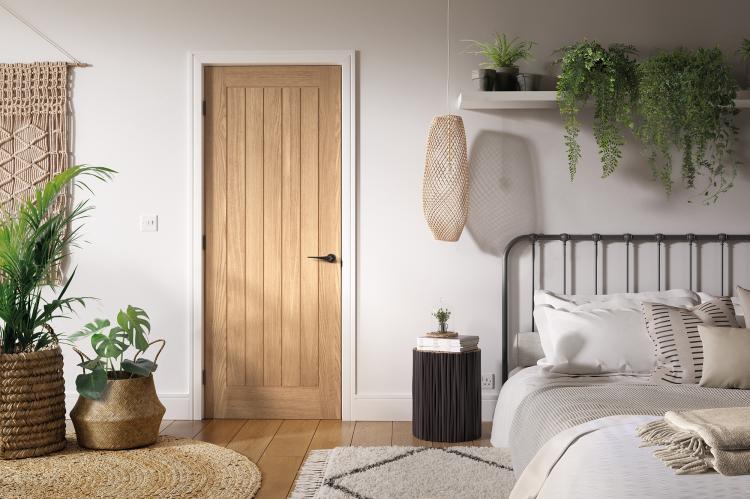
In the market for door hardware and furniture? It doesn't need to be confusing...
Replacing or ordering new door hardware can sometimes be a little confusing. Whether you’re exploring the world of door hardware online or at your local home improvement store, it helps to be able to understand some of the product-specific terminology and industry jargon. This glossary of door hardware-related terminology details the most common words and terms used in door construction. We hope this article will increase your understanding and make product selection easier.
Please visit our Internal Doors section for more information on the Internal Doors that we stock.
1 - Basic Door Hardware Terminology
Active door - The active door (in a double-door setting) opens first and has the locking or latching device. The other door is called the inactive door.
Anchor - A device used to attach a door frame to the surrounding structure or wall.
Backset - The distance from the edge of a door to the centre of the hole drilled for a lock set or deadbolt. Most interior doors have a 2-3/8" back set.
Ball catch - A push or pull fastener which is ideal for cupboard doors.
Bathroom lever - A handle that incorporates a thumb-turn lock and emergency release.
Bore or bore hole - The bore hole is the large hole drilled in a door through which the main assembly of a handle or knob set is installed.
Cylinder - The cylindrical shaped mechanism housed within door locks that contains the tumbler and keyway. A key is inserted into the keyway to operate the lock.
Door handle plate - A decorative plate which mounts to the face of the door with holes to accept the handle and cylinder.
Door hinge - Hinges are made up of two metal plates attached together with a removable pin. The hinge is used to attach the door securely to the door jamb and allows a door to pivot on one edge as it opens and closes. The most common type of hinge used for hanging interior doors around the home is the butt hinge.
Door swing - This is the direction the door opens. The general rule of thumb is to hang interior doors to open into a room rather than a hallway or other busy area. This is to prevent a door opening into traffic which could result in injury. When the swing varies from the general rule of thumb, it’s usually to accommodate for:
1) Architectural design (such as small, tight spaces)
2) Safety reasons (doors in an elderly persons home may be designed to open out away from the room to prevent the door being blocked if she/he has fallen).
Door stop - The door stop is a piece of moulding that runs vertically along the jamb that stops the door and prevents it from opening the opposite way.
Dummy knobs - Also sometimes referred to as a dummy trim, these knobs are surface mounted to the door with no latching or locking functionality. A dummy knob is used to open and/or close a door.
Escutcheons - Decorative plates used to conceal a lock.
Finish - The finish is an all-encompassing term used to describe the outer colour or metal finish of the product.
Fire rated - Products that are designed to help provide an effective barrier against the passage of fire, radiated heat, smoke and toxic gasses.
Handed - Defines whether a handle is right or left handed.
Jamb - The door jamb, which is typically made from wood, is the frame which surrounds the door.
Kick plate - A protective plate applied on the lower section of the door. The term kick plate comes from the fact that when people's hands are occupied they often kick the bottom of the door to open it.
Latch - The latch is the cylinder that is driven through the edge of the door when the door knob is turned.
Lever handle - Lever handles are traditional door handles which sit on a back plate. They operate and have the same functionality as a door knob.
We also stock lever on rose door handles which are handles fixed to a circular plate (rather than a rectangular plate). These door handles have various benefits that include a complete flush finish that hide any fixtures and screws. You can find all our styles here.
Master key - A key that opens every one of a given set of locks.
Mortice - A hole made in the door which holds the lock.
Mortice lock - Sometimes spelt mortise, a mortice lock is a specific type of heavy duty lock set that combines locking and latching functions. These types of locks are typically used in applications which require a lock that is both heavy duty and can withstand a high-frequency of use. There are two main types of mortice lock; sash locks and deadlocks.
The video below explains how a mortice lock works:
Rosette - The decorative back plate or trim piece that is located behind the knob that covers the bore hole.
Spindle - A metal bar that passes through the door connecting the handles or knobs together. It also operates the lock mechanism.
Strike plate - Strike plates (or face plates) are the metal plates attached to the side of the door. The purpose of the strike plate is to guide the bolt from the cylinder into the box of the frame and give added reinforcement to the locking mechanism.
2 - Choosing the Right Door Furniture
Unless you plan for each room to be different with unique-styled hardware throughout, you are likely to be aiming for a level of uniformity across your home.
All the door handles, doorknobs, lock sets or hinges that we stock are manufactured by a company called Spira Brass. Spira Brass was established with the principal objective of manufacturing unique, quality hardware for the discerning customer. The products we stock on our website are sourced worldwide enabling us to offer an immense range; from classic door knobs through to bespoke decorative hardware in a wide variety of finishes. You can find all the door furniture and hardware we stock here.
